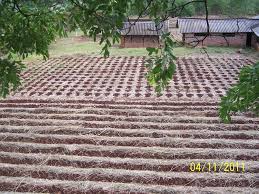Pfumvudza farmers on a roll as above normal rains beckon
IT will not take rocket science to acknowledge that the Government’s climate proofed “Pfumvudza” farming concept is currently running away with the proverbial “new kid on the block” tag with more than three million farmers, mostly women, having been trained on the farming model.
Under the programme, the country targets to produce at least 250 000 tonnes of cereals and a corresponding 45 000 tonnes of oil seeds with the national production expected to be 1,8 million tonnes of cereals and 360 000 tonnes of oil seeds, both sufficient to meet human consumption requirements for a year.
On the other hand, all of the 5 294 agricultural extension officers deployed across all provinces have since been trained on the concept and as at September 2, 2020 a total of 3 255 378 farmers (1 483 195 males, 1 772 183 females) had been trained by the extension workers with others still undergoing training.
The Government is targeting 1,8 million households under the Pfumvudza programme.
Essentially, a stroll or drive in any direction across the country will confirm that most fields now have planting holes with the farmers now just waiting for the first effective rains to start planting.
It is also exciting to note that input providers, who happen to be the Government, have already started dispatching inputs to the Grain Marketing Board (GMB) with farmers registered for the Pfumvudza programme getting their seed and fertilizers from depots close to them.
And by so doing, the Government has since added momentum to the programme through this expeditious availing of the inputs at GMB depots, which will leave farmers without alibis for being found wanting should they fail to perform to expectations.
The Meteorological Services Department has also forecast a normal to above normal rainfall season, which should give the farmers more reason to give it their all and produce competitively.
Just last week I visited my homeland, Mhondoro, and was impressed with the level of preparedness I saw there. Farmers that I talked to were brimming with confidence after their planting holes were certified properly done by their Agritex extension officers and were just waiting to get the inputs.
I also noticed glaring differences between these farmers and those self-financing their activities whose fields are yet to be readied for the approaching season. Of course it is the high input prices that are discouraging them from doing their preparations in earnest.
With a 25kg bag of seed being sold for between $6 000 and $9 000 or the equivalent in US dollars while a 50kg bag of fertiliser costs between US$22 and US$35, most farmers that do not have the cash readily available are still to start serious preparations.
For tillage, private service providers are charging between US$50 and US$100 and 20 litres of diesel per hectare.
I was, however, disappointed to notice that many of the farmers who have already completed digging planting holes have not repaired their fences while in some cases there was no fence to keep out livestock currently not being herded and therefore roaming freely.
This means that they can easily get into the fields and in the process trample the holes to the point of disappearing while the organic matter deposited into the holes may also be lost. Some livestock units such as goats may even eat the organic matter especially if it comprises dry leaves and grass.
There are also chances that even people may take short cuts and go through the fields trampling on the holes in the process. This simply means that the farmers need to either rehabilitate their fences or post people to guard the fields against livestock and these jay walkers who do not respect other people’s interests.
In fact, planting holes will not need protection from animals and people only — they will also need regular checking to ensure no weeds are growing inside especially if they (the holes) had some moisture at the point of establishment.
Weeds will use up moisture that is expected to help nourish the plant later and this will defeat the logic of using the potholing method in crop farming if the moisture meant for plants is used up by the unintended beneficiaries.
Of course, this is not the most worrisome scenario for the farmer should the worst case situation of having the holes completely obliterated happen making it necessary for the farmers to dig fresh ones, which is just intolerable.
It would mean either expending on labour or the farmer having to do the digging exercise all over again when it is something they always wish could be done by a benevolent spirit or those imaginary fairies in children’s cartoons since it constitutes the most taxing part of the programme.
The idea of just fencing the fields is not only important in protecting the planting holes in the fields but will later help secure all crops, even those grown outside the Pfumvudza programme from stray animals and thieves. Thieves naturally want to take their chances whenever there is laxity in security and crop fields are not exempted.
Away from the Pfumvudza programme momentum, Government’s Command Agriculture targeting large-scale producers is also on course with approved banks coming into the fray to ensure the smooth rolling out of the programme.
Successful applicants have since started collecting their inputs for the season from GMB depots.
The country has set a target of 3,6 million tonnes of maize this coming season and this target looks surmountable especially after weather experts predicted normal to above normal rains, which is sweet music to the ears of farmers doing dryland farming while those using irrigation will obviously give it their all too.
Last year, the maize and traditional grains output was estimated at 1,1 million tonnes against a national requirement of 2,3 million for human and livestock consumption.-herald











